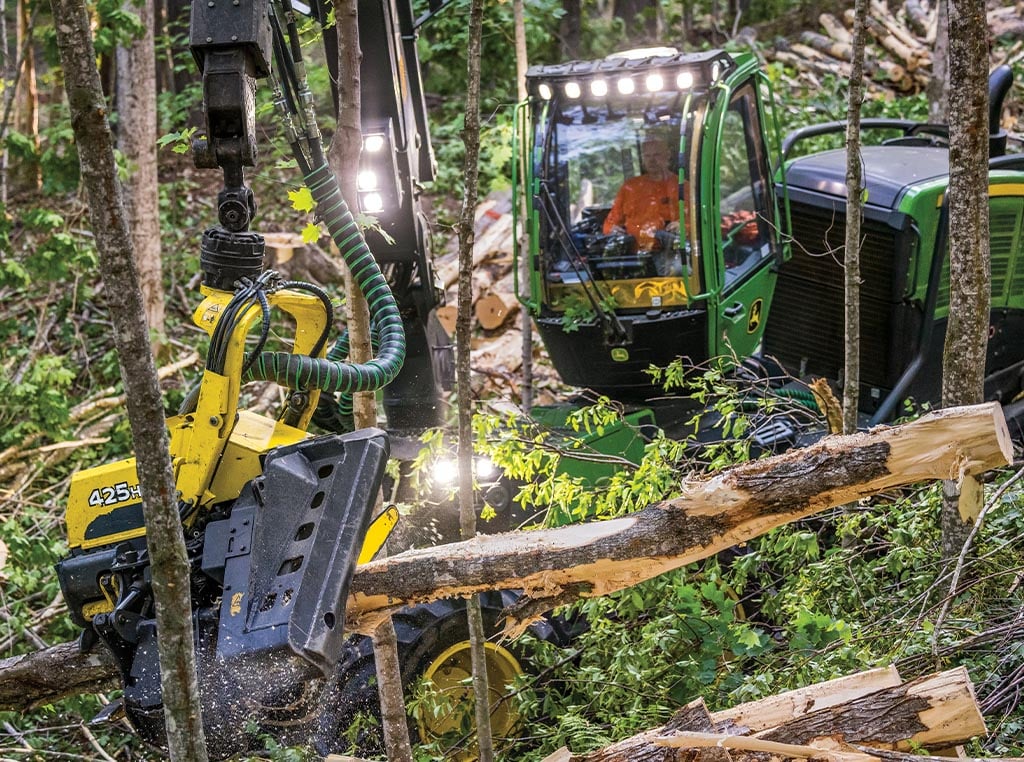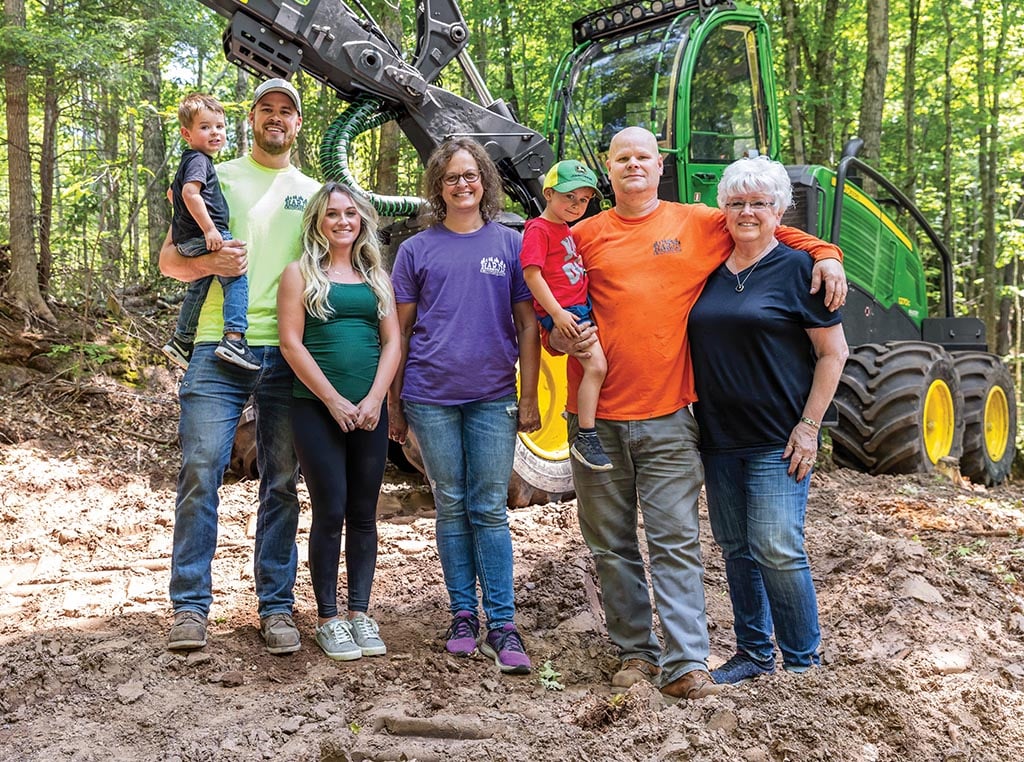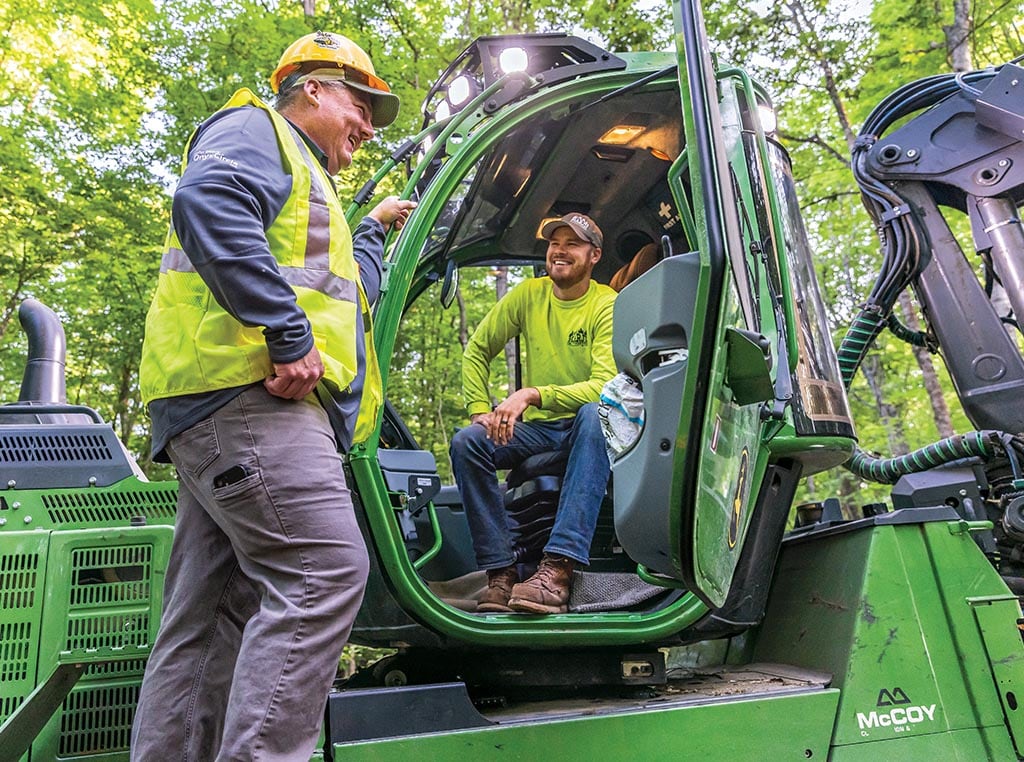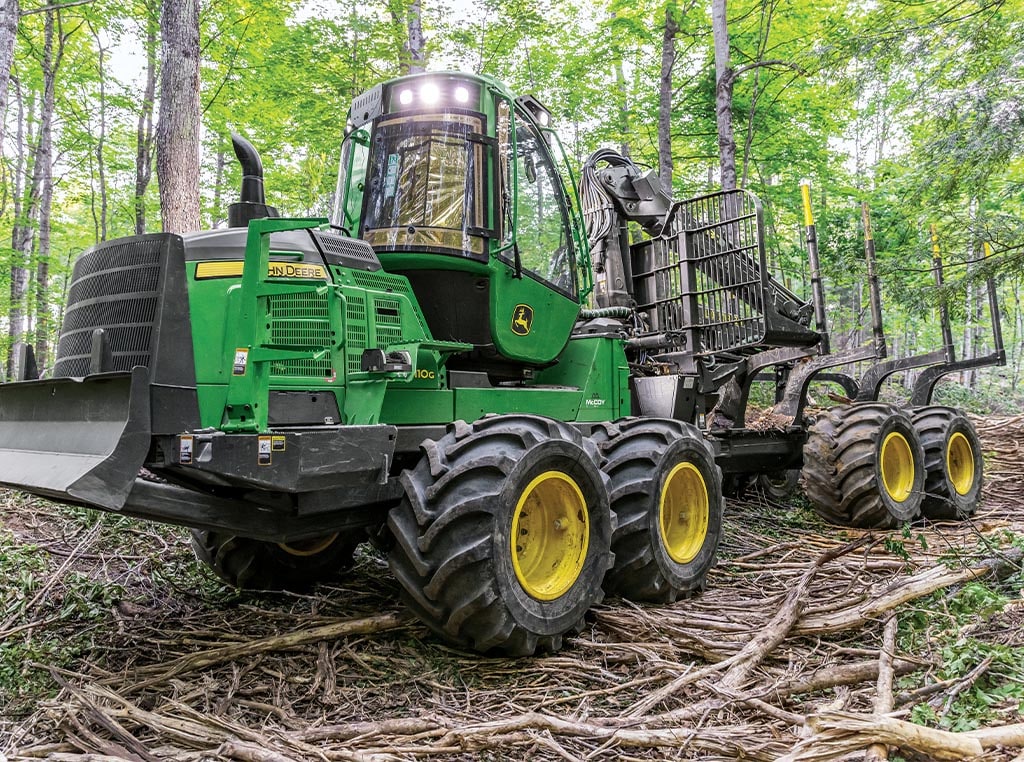Winter 2024
Never Back Down
Harju Logging tackles tough terrain in Michigan’s Upper Peninsula with the help of an eight-wheel 1270G Wheeled Harvester
![]() 6 MIN READ
6 MIN READ
On a logging site near Marquette in Michigan’s Upper Peninsula (U.P.), Don Harju and his son Cody are reading each other’s minds. Don adeptly guides an eight-wheel John Deere 1270G Wheeled Harvester through ravines and steep slopes, cutting hardwood for Cody to collect with a Deere 1110G Forwarder. The goal is to harvest 65 cords a day, so there’s no time to lose. Or for idle chitchat.
“He cuts,” says Cody. “I skid. We don’t even talk to each other. He looks at me. I look at him. We can read each other and just know what needs to be done.”
One of a kind
Cody represents the fifth generation of Harju loggers. “He’s one of a kind,” says Don. “He’s probably the best operator I’ve seen, and I’ve seen a lot of operators.”
The hilly and rugged logging site they are working on is typical for the U.P. “I’ve always loved working in hills,” reflects Don. “Just the difference in the terrain. I’m always curious to see what’s over the next ridge. That’s what keeps me cutting that day. I want to be surprised.”
Don recalls how his own father, Donald Harju Sr., always worked in the hills. “Dad never had easy jobs,” he recalls.
Like many loggers in the U.P., Don and Cody grew up in the woods. Don carried his father’s oil, gas, and measuring stick, just like Cody did for him. “Being in the woods with Dad is how I learned my species and grades,” remembers Cody. “I went from there.”
Don remembers his grandfather taking him to his uncle’s house when he was very young and hearing them discuss logging over coffee.
Don’s father bought his father’s operation in 1976. The elder Harju hand-felled white pine and used a front-end loader to skid wood to the landing for haul trucks. He’d unload the wood from the pulp truck onto railroad cars. In the 1980s, he replaced the front-end loader with a brand-new John Deere 540B Cable Skidder.

“Being in the woods with Dad is how I learned my species and grades. I went from there.”
Determined to succeed
In 1993, Don bought the 540B from his father to start Harju Logging. “My dad used John Deere and I’ve run Deere my whole life,” he adds. “I’ve tried other machines, and in my opinion, John Deere outperforms them and just suits my needs better.”
“I’m proud of my dad,” says Cody. “It wasn’t easy for him. He was a high school dropout, and working in the woods didn’t make it easier. But he didn’t care. He made it work.”
Don quit school when he was 16 after his principal told him he would never amount to anything. Later when he started his own logging company, the logger he was working for told him he’d never make it. “That’s always a pretty good incentive,” says Don. “Don’t ever tell me I’m not going to succeed.”
Hard work was a given. But Don succeeded also because he knew not to grow too big, too fast. “If I couldn’t run the operation myself and make it survive, then I wasn’t doing it,” he says. “And that’s where I am today.”
Around 2003, Don began to mechanize his operation, purchasing a forwarder and a harvester. He would later obtain a Timberjack 1270D Harvester that he would eventually trade for a John Deere 1270G.
The company has had great luck with the harvesters. “They’re strong-running machines,” Don says. “With eight wheels, they run smoothly and have excellent traction in hilly environments. And the Deere H425 Harvester Head works really well in big timber.”
Over the years, Harju Logging has run four John Deere forwarders, including the current 1110G. “I love the rotating cab,” says Cody. “It really helps me see where I am going and makes things more comfortable. When I approach the landing, I can spin around and immediately start unloading. In a fixed cab it takes more time, and over weeks and months that adds up.”
Talk softly and carry a big stick
Don and Cody Harju quietly go about their business, but their John Deere 1270G Wheeled Harvester and 1110G Forwarder love to share. Live production and location data is shared between the machines via John Deere TimberMatic™ Maps, taking the guesswork out of decision-making. “You don’t have to think much,” says Cody. “It really helps improve efficiency and productivity.”
Data collected by the harvester and the precise GPS-based location of the felled timber is automatically transmitted to the forwarder. Driving routes, assortments, and tree species are displayed on the system’s monitor.
“I can easily see where the harvester and landing are to determine optimal skidding paths,” says Cody. “I can also see and mark the location of cutlines, soft ground, and obstacles. And whether it’s bolts, logs, pulp, and species, TimberMatic Maps tells me where everything is at and the quantity. That’s huge on this job with all the hills and ravines. If I didn’t clean up a row of logs, the system will remind me that it’s there.”
Cody also appreciates Intelligent Boom Control (IBC), which makes it easier to maneuver the grapple on the forwarder by automatically controlling all boom movements. Instead of controlling each independent boom function separately, the operator simply steers the grapple toward the target. “On the older machines without IBC, you really had to finesse it,” says Cody. “IBC makes it easier and is super smooth.”
Attitude of gratitude
Service and support from the local John Deere dealer, McCoy Construction & Forestry, help keep Harju Logging up and running. “They’ve always been fair and honest with me,” says Don. “My salesman is always there for me, and their mechanics are top-notch. The parts department is phenomenal.”
“I have zero complaints,” adds Cody. “I wish we could clone our techs and service department, not because we have a lot of issues, but because they are so good at what they do. The support and service along with the reliability of the machines are the key reasons we run John Deere.”
On the day Deere’s editorial team visited, Jason Whitaker, territory manager of McCoy Construction & Forestry, grilled hot dogs and burgers for the Harju family, crew members, and dealer representatives. Don and Jason constantly ribbed each other, revealing their comfortable relationship. “I can’t thank McCoy enough for everything they’ve done over the years,” says Don. “You’d never make it without the help of others.”
Including, of course, Cody. “I knew from day one that the two of us could make this work,” says Don. “It’s been excellent.”
“If it weren’t for Dad, I wouldn’t be here out in the woods talking with you,” adds Cody. “I don’t know many people who go to work and enjoy it as much as this.”
Harju Logging is serviced by McCoy Construction & Forestry, Marquette, Michigan.
Related Articles
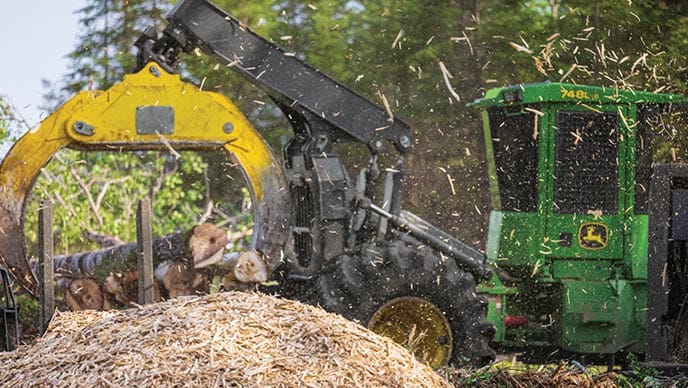
When the Chips Are Down
The people at Carlson Timber Products are there for each other, even in the toughest times.
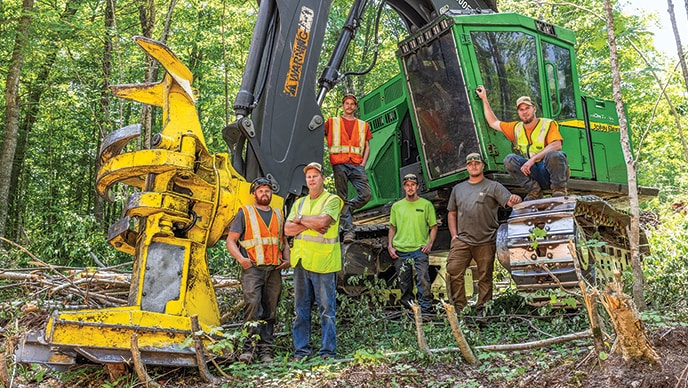
Front Man
A multigenerational logging company finds success by embracing teamwork and new technology.
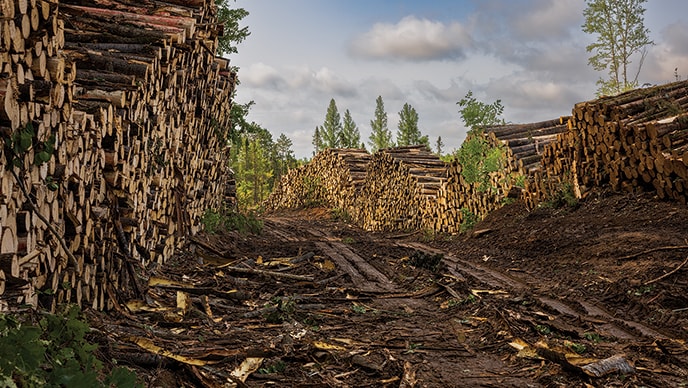
The Marshall Plan
Marshall Logging continues eight decades of logging by adapting to change and adopting new technology.
Do you think your company's story would resonate with others in the logging industry?
SHARE YOUR JOURNEY

